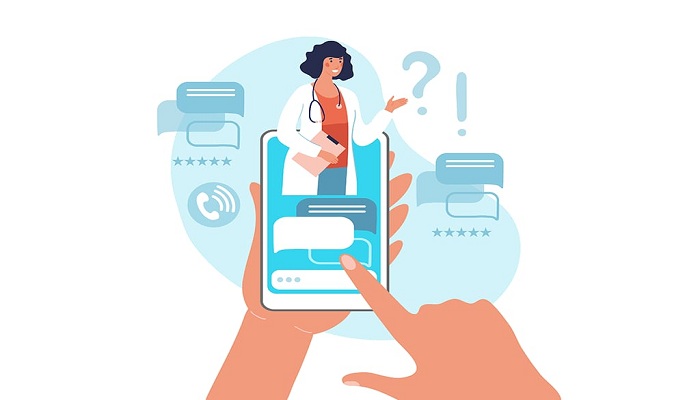Telehealth and Remote Nursing: Revolutionizing Healthcare Delivery

Telehealth and Remote Nursing: Revolutionizing Healthcare Delivery
Published On: 22-01-2025 | 5 min Read
Telehealth and remote nursing are reshaping healthcare delivery, making it more accessible and efficient. By harnessing the power of technology, nurses are improving patient outcomes, providing critical care to underserved populations, and enhancing the overall healthcare experience. While challenges remain, the future of remote nursing holds immense potential, and it will continue to evolve to meet the needs of patients in a rapidly changing world.
By focusing on the following advancements, the NSMS Nursing Institute is revolutionizing healthcare delivery, preparing nurses to lead in a rapidly evolving digital healthcare environment.
Telehealth and it's In recent years, telehealth has rapidly transformed the way healthcare is delivered, with a significant focus on remote nursing. This shift has not only changed how patients access care but has also provided new opportunities for nurses to support individuals, particularly those in remote or underserved areas. As technology advances and the demand for healthcare services continues to grow, telehealth is proving to be an essential tool in providing high-quality care efficiently and cost-effectively.
What is Telehealth?
Telehealth refers to the use of digital communication technologies to provide healthcare services remotely. It includes a range of services such as virtual consultations with doctors, remote monitoring of chronic conditions, and access to mental health support, all of which can be accessed via smartphones, tablets, or computers. Remote nursing, a subset of telehealth, involves nurses using telecommunication tools to monitor patients, provide education, offer counseling, and manage chronic conditions, all from a distance.
The Role of Remote Nurses
Remote nursing offers several vital services, particularly in areas where access to healthcare professionals may be limited. Some of the core responsibilities of remote nurses include:
1. Patient Monitoring: Nurses use digital tools to track patient health metrics, such as blood pressure, heart rate, glucose levels, and oxygen saturation. Through continuous monitoring, they can detect early signs of complications and intervene before conditions worsen.
2. Chronic Disease Management: Many patients with chronic conditions, like diabetes, hypertension, or COPD (chronic obstructive pulmonary disease), benefit from remote nursing care. Nurses work with patients to monitor symptoms, offer advice on medication management, and provide education to prevent exacerbations.
3. Health Education: Remote nurses educate patients on managing their health and wellness. They provide valuable resources about lifestyle changes, medication adherence, nutrition, and mental health.
4. Virtual Consultations: Nurses can conduct telehealth consultations where they assess symptoms, guide self-care, answer health-related questions, and provide emotional support. This is especially beneficial in areas with healthcare shortages or for patients with mobility issues.
5. Follow-up Care: After an initial doctor’s visit or hospitalization, remote nurses can follow up with patients to ensure they are adhering to treatment plans, taking medications, and recovering as expected. This level of follow-up is critical for improving patient outcomes and preventing readmissions.
Benefits of Remote Nursing
1. Increased Access to Care: Telehealth removes geographical barriers, enabling patients to access nursing care regardless of location. This is especially crucial in rural or underserved areas, where healthcare professionals may be in short supply.
2. Cost-Effective: Telehealth reduces the need for patients to travel to healthcare facilities, which can be particularly costly for those in remote areas. It also saves hospitals and clinics from incurring additional costs related to in-person appointments.
3. Convenience: For patients, telehealth offers the convenience of receiving care from home. This is particularly beneficial for individuals with mobility challenges, busy families, or those who need to manage chronic conditions with regular check-ins.
4. Enhanced Continuity of Care: Remote nursing ensures that patients receive continuous monitoring and support, reducing the chances of complications. This is especially important for elderly patients or those with complex health needs.
5. Improved Patient Outcomes: Studies have shown that patients who engage in telehealth services, particularly those with chronic conditions, have better health outcomes, including fewer hospital admissions, fewer emergency visits, and improved quality of life.
Challenges in Remote Nursing
While telehealth presents numerous benefits, it also faces several challenges:
1. Technology Barriers: Not all patients have access to the necessary technology or are comfortable using it. Ensuring patients have the right tools and skills is a critical challenge in expanding remote nursing services.
2. Privacy and Security: Protecting patient data is paramount. Telehealth platforms must comply with privacy laws like HIPAA (Health Insurance Portability and Accountability Act) to ensure patient information is secure and confidential.
3. Licensing and Regulations: Nurses providing remote care must adhere to varying state or national regulations, which can complicate cross-border care. Licensure laws can sometimes prevent nurses from delivering care to patients outside their designated areas.
4. Clinical Limitations: Although remote monitoring can be highly effective, it cannot replace physical exams or certain types of interventions. Nurses must carefully assess when in-person care is necessary, especially for patients with complex or urgent needs.
The Future of Remote Nursing
The future of telehealth and remote nursing looks promising. With the continued advancement of digital health technologies—such as wearable devices, AI-driven health apps, and virtual reality tools—nurses will be equipped with more powerful tools to monitor, educate, and care for patients remotely. Additionally, telehealth integration with electronic health records (EHRs) will streamline communication between nurses, doctors, and other healthcare providers, improving the coordination and efficiency of care.
Furthermore, the increased acceptance of telehealth, especially after the COVID-19 pandemic, is likely to drive greater investment in telehealth infrastructure and expansion of remote nursing roles. Nurses will play a central role in healthcare's digital transformation, helping to bridge gaps in care and making healthcare more accessible, affordable, and patient-centered.
